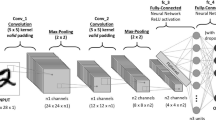Abstract
Traditional deep learning models have limited ability to extract features from pneumonia images. This study combines convolutional attention modules with transfer learning to improve the model's feature extraction ability and simplify training.This article has discovered an improved CBAM-Xception neural network pneumonia model. This network uses Xception as the main network, and combines with the convolutional attention CBAM module to enhance the expression of lesion information and suppress irrelevant information interference; At the same time, transfer learning is introduced to prevent over fitting when the sample data amount is small. In order to evaluate the effectiveness of the optimization model, experimental simulation tests were conducted on the Mendeley Data public pneumonia dataset. The improved model achieves 94.2% accuracy in classifying four images of COVID-19, bacterial pneumonia, viral pneumonia and normal chest on the test set, and the optimization effect is significant. In order to further verify the performance of this method, the experiment divided the small sample data set to train the model, and divided the large sample data to test the generalization performance of the model. The results show that the model in this paper has good generalization ability. This model can provide an important basis for the auxiliary diagnosis and treatment of pneumonia.
Access this chapter
Tax calculation will be finalised at checkout
Purchases are for personal use only
Similar content being viewed by others
References
Johns Hopkins university. COVID-19 Dashboard by the Center for Systems Science and Engineering at Johns Hopkins University. (16 May 2022).https://coronavirus.jhu.edu/map.html
Shiraishi, J., Li, Q., Appelbaum, D., et al.: Computer-aided diagnosis and artificial intelligence in clinical omaging. Seminars Nuclear Med. 41(6) (2011)
Maozhou, Y.: Research on feature extraction and classification of X-ray lung images. Dalian University of Technology (2019). DOI:https://doi.org/10.26991/d.cnki.gdllu.2019.003229
Yue, L., Ma, L., Wei, B.: Research on children Pneumonia Clinical Syndrome Classification model based on decision tree algorithm. Electronic Test 05, 243–244 (2013)
Jun, S., Park, B., Seo, J.B., Lee, S., Kim, N.: Development of a computer-aided differential diagnosis system to distinguish between usual interstitial pneumonia and non-specific interstitial pneumonia using texture- and shape-based hierarchical classifiers on HRCT images. J. Digital Imaging, 31(2) (2018)
Hearst, M.A., Dumais, S.T.: Support vector machines. IEEE Intell. Syst. Appli. 13(4) (1998)
Sun, Z., Xue, L., Xu, Y., et al.: Overview of deep learning. Appli. Res. Comput. 29(08), 2806–2810 (2012)
Zhou, F., Jin, L., Dong, J.: A review of convolutional neural networks. Chin. J. Comput. 40(06), 1229–1251 (2017)
Zhou, Q., Zhang, J., Pu, Z., et al.: COVID-19 CT image classification method combined with deep layer dense aggregation. Appli. Res. Comput., 1–8 (2023).https://doi.org/10.19734/j.issn.1001-3695.2022.08.0502
Guo, K., Du, Q.C., Wu, A., et al.: COVID-19 recognition technology based on lightweight neural network. Chin. J. Med. Phys. 39(10), 1263–1269 (2022)
Ummah, K.R., et al.: Effect of image pre-processing method on convolutional neural network classification of COVID-19 CT scan images. Inter. J. Innov. Comput. Inform. Control 18(6), 1895–1912 (2022) https://doi.org/10.24507/ijicic.18.06.1895
Zhang, N., Wu, H., Han, X., et al.: Tomato disease recognition method based on multi-scale and attention mechanism. J. Zhejiang Agricul. 33(07), 1329–1338 (2021)
Lin, C., Zhang, G., Yang, J., et al.: Ttransfer learning based recognition for forestry business images. J. Nanjing Forestry Univ. (Nat. Sci.), 44(04), 215–221 (2020)
Li, F.-F., Jia, D., Kai, L.: ImageNet: Constructing a large-scale image database. J. Vis. 9(8) (2010)
Author information
Authors and Affiliations
Corresponding author
Editor information
Editors and Affiliations
Rights and permissions
Copyright information
© 2024 The Author(s), under exclusive license to Springer Nature Singapore Pte Ltd.
About this paper
Cite this paper
Zhang, J., Zhang, B. (2024). Auxiliary Diagnosis of Pneumonia Based on Convolutional Attention and Parameter Migration. In: Sun, Y., Lu, T., Wang, T., Fan, H., Liu, D., Du, B. (eds) Computer Supported Cooperative Work and Social Computing. ChineseCSCW 2023. Communications in Computer and Information Science, vol 2012. Springer, Singapore. https://doi.org/10.1007/978-981-99-9637-7_37
Download citation
DOI: https://doi.org/10.1007/978-981-99-9637-7_37
Published:
Publisher Name: Springer, Singapore
Print ISBN: 978-981-99-9636-0
Online ISBN: 978-981-99-9637-7
eBook Packages: Computer ScienceComputer Science (R0)





